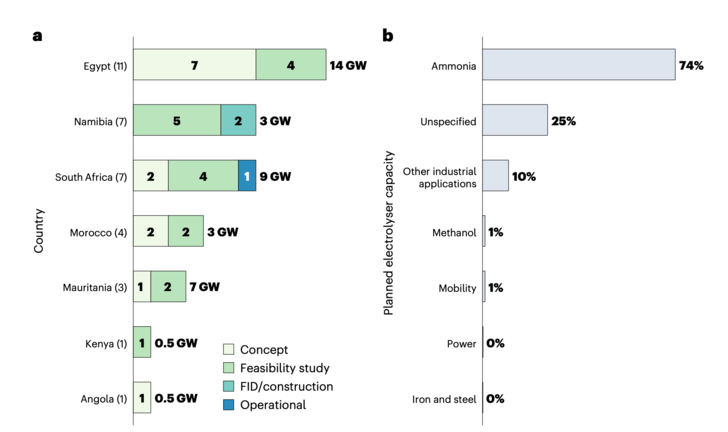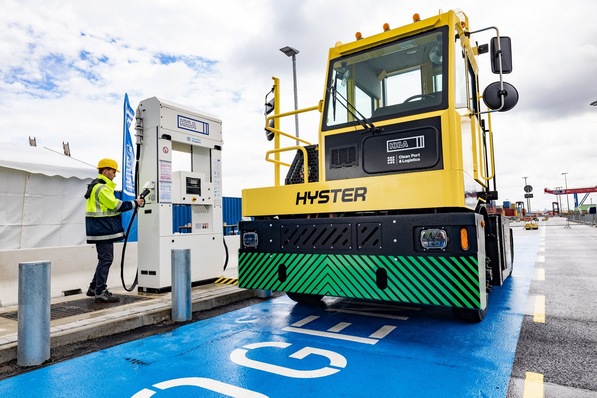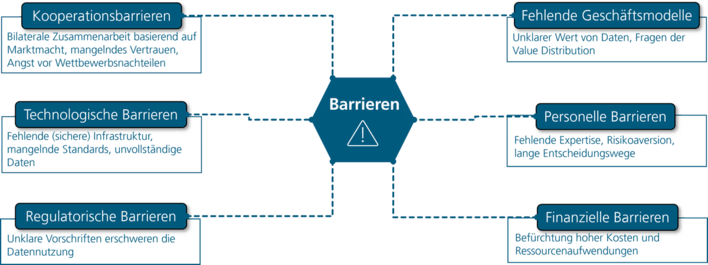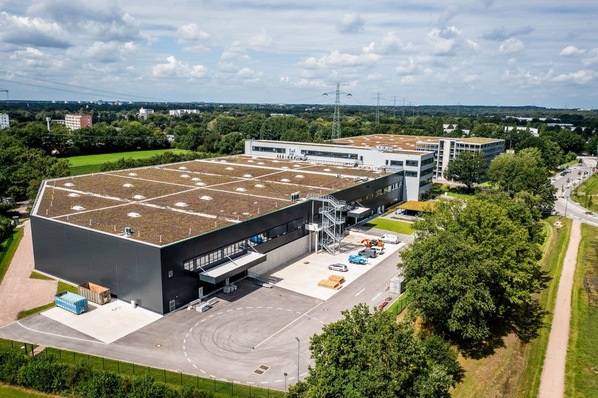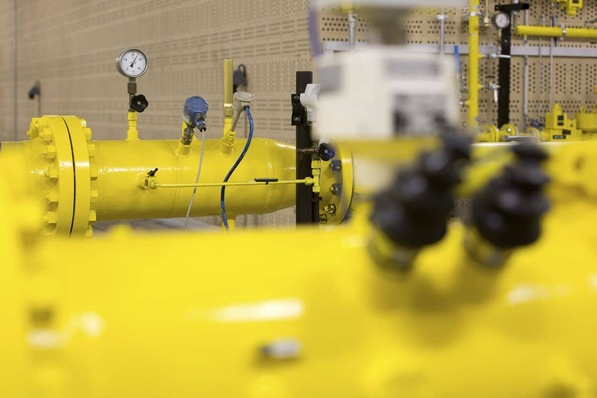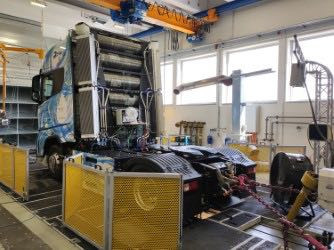Green hydrogen from Africa is seen as a key enabler for decarbonizing sectors in Europe that are difficult to electrify. A study published on the “Nature” website in June of this year examined the cost competitiveness of such imports by 2030 – with sobering results: Without political risk mitigation measures by European countries, hydrogen from Africa remains too expensive.
The study, conducted by researchers from universities in Munich, Zurich and Oxford, is based on geospatial models to calculate the levelized cost of hydrogen (LCOH) and analyzes four realistic financing scenarios. According to the study, the lowest production costs for green hydrogen from Africa – exported in the form of ammonia – range between €4.20 and €4.90 per kilogram. Only through targeted de-risking measures could individual locations reach a competitive level of around €3.20 per kilogram. According to the study, this could be possible in Mauritania around the year 2030.
Only 2.1 percent of the locations analyzed could be competitive under current interest rate conditions with de-risking. However, many of these locations are in politically unstable regions such as parts of Western Sahara, central Algeria or the border area between Sudan and Egypt. In these areas, investment guarantees from international organizations such as the Multilateral Investment Guarantee Agency (MIGA) are hardly available, further limiting the feasibility of large-scale projects.
Another problem is the mismatch between project size and national economic capacity. For example, the planned Aman hydrogen project in Mauritania requires investments of around USD 40 billion – four times the country’s gross domestic product in 2021. Additional challenges include a lack of local skilled labor for wind energy development, water scarcity in certain regions, and high levels of foreign debt in many African countries.
The study also points to international competition: countries such as Chile, Oman or Saudi Arabia offer better institutional frameworks, their own financial resources and more strategically favorable locations. European countries such as Spain also offer comparatively low production costs and better access to consumer markets.
The Nature authors therefore recommend targeted political support from European countries and international organizations. However, this support should be tied to conditions, such as local value creation and industrial use of hydrogen. Countries with existing industrial structures such as Morocco, Egypt, South Africa or Kenya could benefit more from this than, for example, Namibia or Mauritania.
In the long term, intra-African agreements on the production and use of green hydrogen could also be beneficial. Such approaches could help stimulate development and avoid one-sided export structures.


